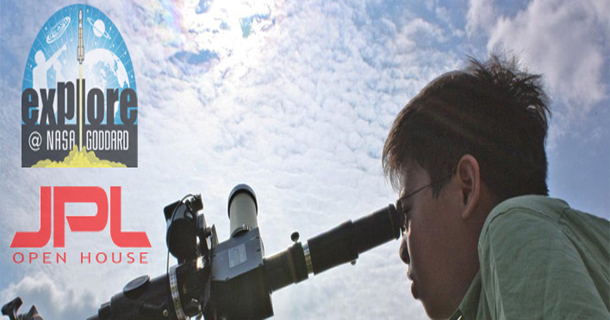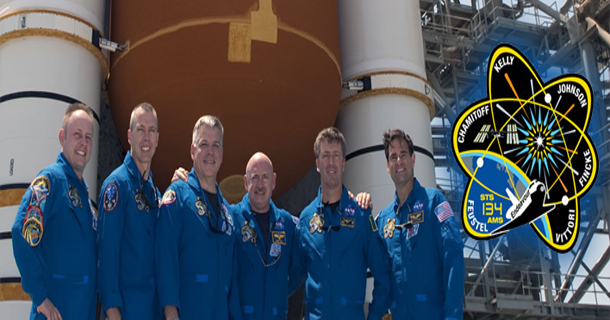Multiple Methods Help Track Elusive Quarry
The first planets to be found around nearby stars have never been seen. Instead, astronomers have discovered them indirectly, inferring the existence of an unseen companion through its effects on the star itself.
So far, astronomers have only turned up huge planets that probably don't harbor life. However, future missions such as Terrestrial Planet Finder and its precursors will search for direct evidence of new planets as small as Earth.
The challenges of observing extrasolar planets stem from three basic facts:
- Planets don't produce any light of their own, except when young.
- They are an enormous distance from us.
- They are lost in the blinding glare of their parent stars.
The following is an overview of some of the planet detection methods that have thus far proved successful, as well as other methods currently in development.

Precise measurement of the velocity or change of position of stars tells us the extent of the star's movement induced by a planet's gravitational tug. From that information, scientists can deduce the planet's mass and orbit.
Why does a planet cause a star to sway? If a star has a single companion, both move in nearly circular orbits around their common center of mass. Even if one body is much smaller, the laws of physics dictate that both will orbit the center of the combined star and planet system. The center of mass is the point at which the two bodies balance each other.
The radial velocity method measures slight changes in a star's velocity as the star and the planet move about their common center of mass. In this case, however, the motion detected is toward the observer and away from the observer. Astronomers can detect these variances by analyzing the spectrum of starlight. In an effect known as Doppler shift, light waves from a star moving toward us are shifted toward the blue end of the spectrum. If the star is moving away, the light waves shift toward the red end of the spectrum.
This happens because the waves become compressed when the star is approaching the observer and spread out when the star is receding. The effect is similar to the change in pitch we hear in a train's whistle as it approaches and passes.
The larger the planet and the closer it is to the host star, the faster the star moves about the center of mass, causing a larger color shift in the spectrum of starlight. That's why many of the first planets discovered are Jupiter-class (300 times as massive as Earth), with orbits very close to their parent stars.
 Astrometric displacement of the Sun due to Jupiter as at it would be observed from 10 parsecs, or about 33 light-years. |
The planets of our solar system have this effect on the Sun, producing a to-and-fro motion that could be detected by an observer positioned several light years away.
An important goal of the Space Interferometry Mission is to detect the presence of Earth-size planets orbiting nearby solar type stars via narrow angle astrometry. Similarly, the Keck Interferometry will conduct an astrometric survey of hundreds of stars to search for planets with masses as small as Uranus.

If a planet passes directly between a star and an observer's line of sight, it blocks out a tiny portion of the star's light, thus reducing its apparent brightness.
Sensitive instruments can detect this periodic dip in brightness. From the period and depth of the transits, the orbit and size of the planetary companions can be calculated. Smaller planets will produce a smaller effect, and vice-versa. A terrestrial planet in an Earth-like orbit, for example, would produce a minute dip in stellar brightness that would last just a few hours.

This method derives from one of the insights of Einstein's theory of general relativity: gravity bends space. We normally think of light as traveling in a straight line, but light rays become bent when passing through space that is warped by the presence of a massive object such as a star. This effect has been proven by observations of the Sun's gravitational effect on starlight.
When a planet happens to pass in front of a star along our line of sight, the planet's gravity will behave like a lens. This focuses the light rays and causes a temporary sharp increase in brightness and change of the apparent position of the star.
Astronomers can use the gravitational microlensing effect to find objects that emit no light or are otherwise undetectable.





 10:30 PM
10:30 PM
 Nasa Information
,
Nasa Information
,
 Still from animation portrays how the entire sky is flattened to the two-dimensional maps that IBEX presents. Credit: NASA/Goddard Space Flight Center
Still from animation portrays how the entire sky is flattened to the two-dimensional maps that IBEX presents. Credit: NASA/Goddard Space Flight Center Artist's concept of Wide-field Infrared Survey Explorer. Image credit: NASA/JPL-Caltech
Artist's concept of Wide-field Infrared Survey Explorer. Image credit: NASA/JPL-Caltech  WISE arrives at Vandenberg Air Force Base. Credit: NASA.
WISE arrives at Vandenberg Air Force Base. Credit: NASA.










